The Complete Metal Comparison Guide
Metals make up over 75% of the periodic table, and each is classified and used differently. That shows there’s a lot to know about metal, but knowing everything is impossible unless you happen to be a metallurgist. Use this guide to help you compare and understand the differences in metals.
Table of Contents
What Are the Different Types of Metals?
While many types of metals are on the periodic table, most pure metals are too soft and malleable to be used in industrial applications alone. That's why metal alloys are formed.
Metal alloys are pure metals combined with other elements to produce durable workpiece materials. When determining the different types of metal and their uses, all industrial metals have one element in common — iron.
Iron content is a baseline for determining metal and alloy types, which are classified into two categories; ferrous and nonferrous. Ferrous metals are those that contain iron, whereas nonferrous metals don’t contain iron.
Below is a list featuring common ferrous and nonferrous metals and alloys.
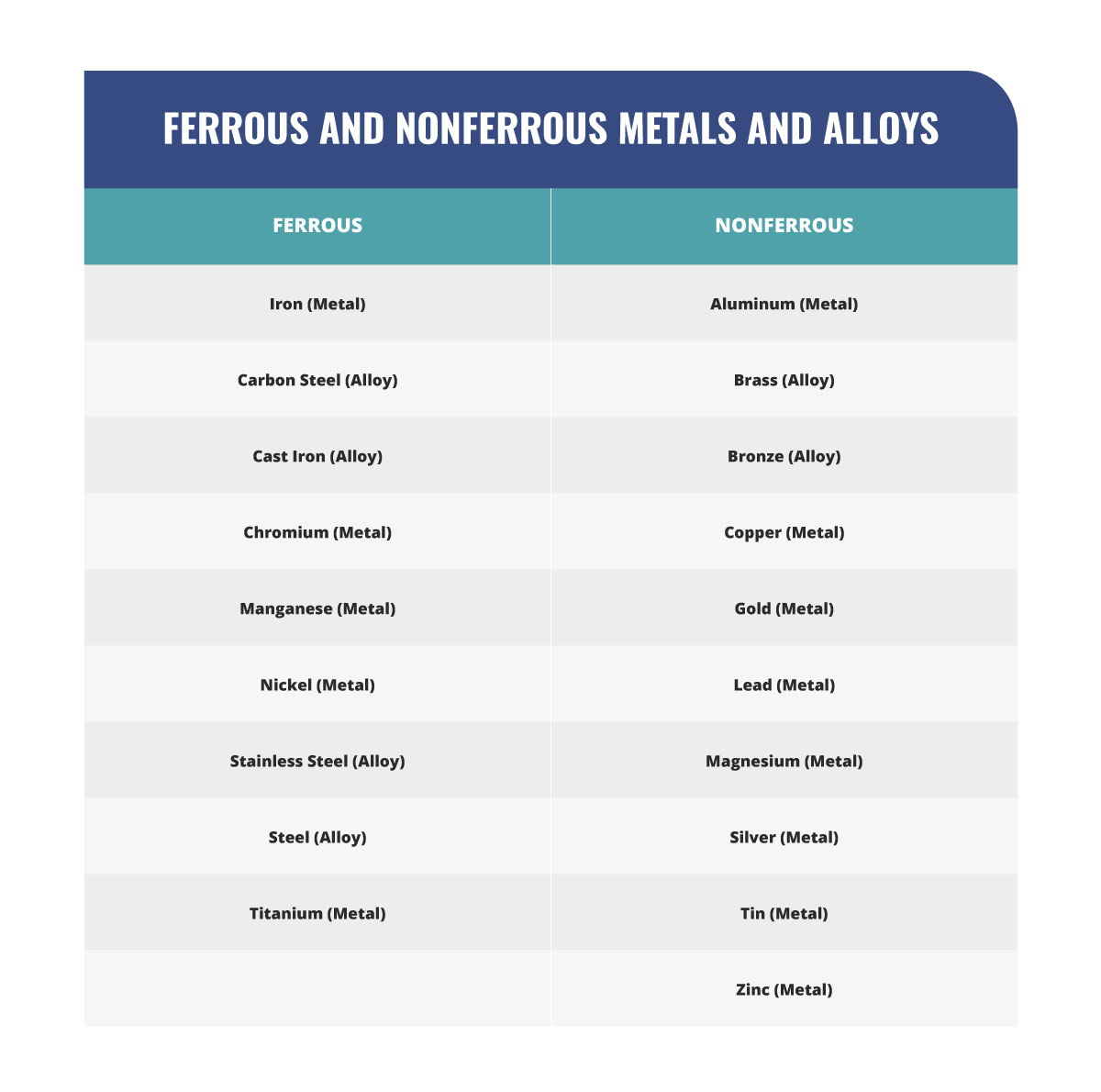
What Are the Strongest Metals?

Declaring any given metal the strongest metal on earth is trickier than it sounds. Comparing metals based on strength alone doesn’t work because strength is subjective to the context in which a metal is used. Similarly, there isn’t a universal scale for strength — there are four types:
- Tensile Strength: Tensile strength refers to a metal’s ability to resist tension.
- Compressive Strength: Compressive strength refers to a metal’s ability to withstand compression.
- Yield Strength: Yield strength refers to a metal’s ability to withstand permanent deformation or bending.
- Impact Strength: Impact strength refers to a metal’s ability to withstand a blow without fracturing or shattering.
The top 10 strongest metals and alloys are listed below in alphabetical order:
- Carbon steel
- Chromium
- Inconel
- Iron
- Stainless steel
- Steel-Iron-Nickel alloy
- Titanium
- Titanium aluminide
- Tungsten
- Tungsten carbide
What Each Metal Is Made of
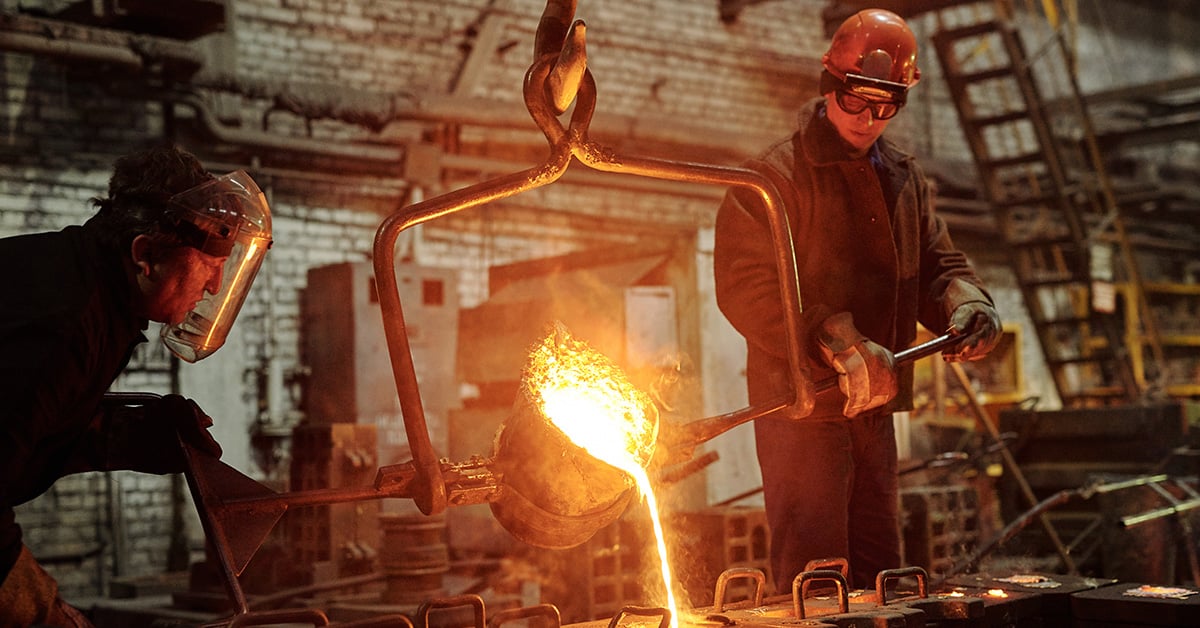
At a fundamental level, each metal is made up of atomic materials such as electrons, neutrons, and protons. Like other atoms, pure metals are distinguished from one another by their number of protons.
Pure metals in the earth’s crust are combined with metallic and nonmetallic elements to form alloys. Adding additional elements to pure metals alters their chemical properties and creates harder, more durable, and corrosion-resistant alloys.
Let’s take a look at what the following metal alloys are made of:
Brass
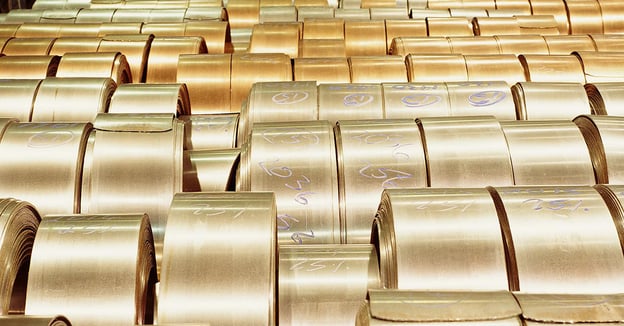
Brass is a nonferrous metal alloy made of copper and zinc. The proportions of zinc and copper can vary to create a range of brasses with unique properties. Brass can also be combined with other elements to create brass alloys.
Bronze
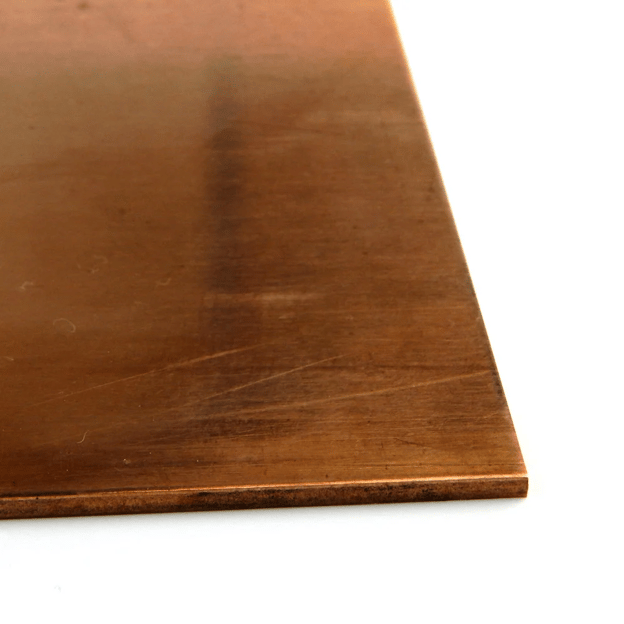
Bronze is a nonferrous metal alloy made of copper and tin. The proportions of copper and tin can vary, but pure bronze contains up to 90 percent copper. Bronze can also be combined with other elements to create bronze alloys, such as phosphor bronze. Phosphor bronze is made of copper, tin, and phosphorus.
Carbon Steel
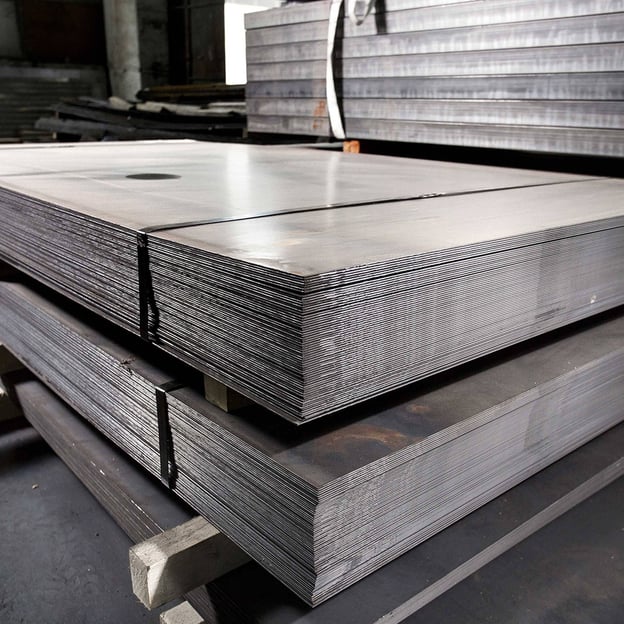
Carbon steel is a ferrous metal alloy made of iron and carbon. The proportions of iron and carbon can vary, resulting in three different types of carbon steel; low-carbon steel, medium-carbon steel, and high-carbon steel.
Cast Iron
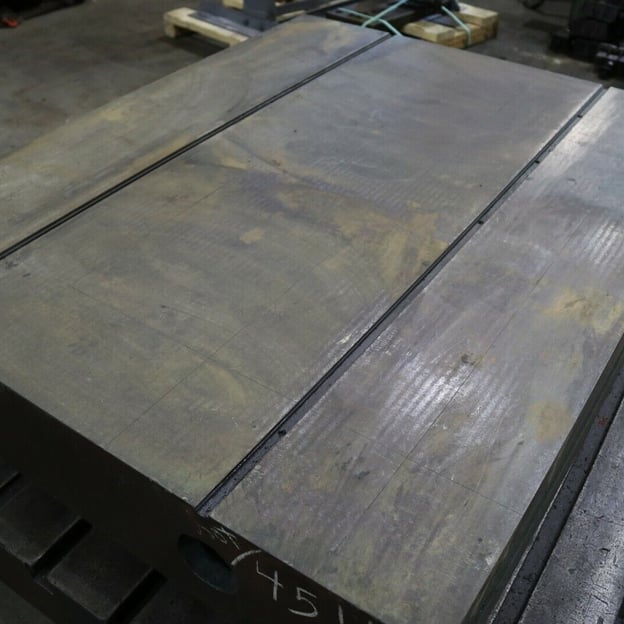
Cast iron is a ferrous metal alloy made of iron and carbon. However, cast iron is also composed of small amounts of other alloys, such as manganese and silicon, which modify its properties further to be designated cast iron.
Stainless Steel
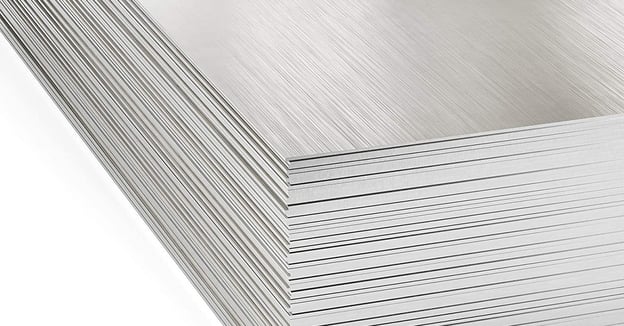
Stainless steel is a ferrous metal alloy made of iron and carbon with the addition of steel, chromium, and nickel. Combining these alloys creates stainless steel’s unique sheen and corrosion-resistant properties.
Steel
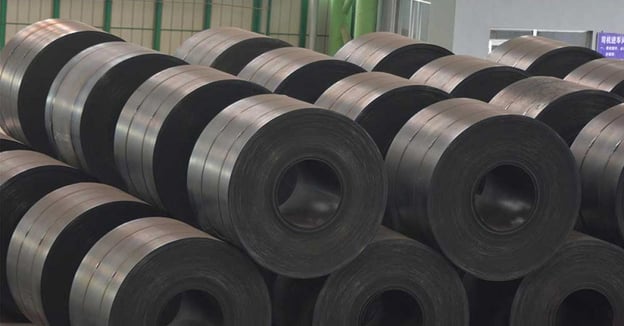
Steel is a ferrous metal alloy made of iron and carbon with small amounts of manganese, silicon, phosphorus, sulfur, and oxygen. Steel is the world’s most commonly used engineering and construction material, often the base component for other metallic alloys.
What Are the Grades of Steel?
Grades of Steel
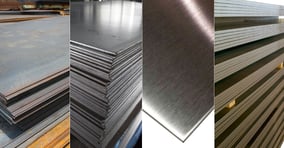
The four main groups for categorizing steel types are carbon, alloy, stainless, and tool.
- Carbon steel: Ferrous metals containing iron and carbon with only trace amounts of other elements. This is the most popular of the four steel grades, known for durability and tensile strength. It accounts for 90% of all steel production.
- Alloy steel: Ferrous or nonferrous metals containing iron and carbon with additional alloys and elements such as nickel, copper, chromium, and aluminum. These additional elements bolster the steel's strength, corrosion resistance, and machinability.
- Stainless steel: Ferrous metal alloys containing iron and carbon with the addition of steel, chromium, and nickel. Chromium is the primary ingredient for stainless steel sheen, strength, and corrosion resistance.
- Tool steel: Metal alloys containing iron and carbon with the addition of tungsten, molybdenum, cobalt, and vanadium that increase durability and heat resistance. They are used for cutting and drilling equipment and machinery.
You can determine different grades of steel by measuring the amount of carbon, the number of other alloys, and how the manufacturer processes it. There are two standard systems for classifying steel grades:
- The ASTM Grading System: Assigns each steel type a letter prefix based on its overall category and a sequential number corresponding to its specific properties. The ASTM designation for iron and steel is “A.” An example is A36 Steel, a carbon structural steel used in the most demanding applications and conditions, including bridges, I-beams, boat ramps, and more.
- The SAE Grading System: Assigns each steel type a four-digit number for classification. The first two digits denote the steel type and alloying element concentration, and the last two indicate its carbon concentration. An example is 1060 Steel, which is a plain-carbon steel used in general-purpose applications where high strength and toughness are required.
Which Metals Are Magnetic?
Magnetic Metals

Metals are magnetic when the crystalline structure of their atoms aligns, so all the atoms face the same direction. Only ferromagnetic metals and alloys are capable of being magnetized and are classified into one of three types:
- Permanent magnets — are usually naturally-occurring elements or chemical compounds that do not easily lose their magnetism.
- Temporary magnets — become magnetized when they enter a magnetic field, but lose their magnetism gradually as the field is removed.
- Electromagnetic magnets — require an electric current to run through wire coils to produce a magnetic attraction.
The three elemental metals that are naturally ferromagnetic are iron, cobalt, and nickel. Compounds and alloys can also be magnetic if they contain iron, cobalt, or nickel, such as steel and stainless steel. Non-magnetic metals include aluminum, copper, lead, tin, titanium, zinc, and alloys such as brass and bronze.
List of Magnetic Metals
- Cobalt
- Dysprosium
- Gadolinium
- Iron
- Nickel
- Stainless steel (ferrous only)
- Steel
List of Non-Magnetic Metals
- Aluminum
- Brass
- Bronze
- Copper
- Gold
- Silver
- Zinc
Want to learn more about the basic properties of magnetic metals, the different types, their common uses, examples, and more? Check out our complete magnetic metals list.
Looking to purchase magnetic metal materials? We can provide you with various materials, including cold-rolled steel, high-carbon spring steel, tempered stainless steel variations, and more in multiple grades, sizes, and gauges.
Mead Metals: Your Source for Specialty Metal Material
When it comes to manufacturing specialty products, your customers depend on you. But who do you rely on for metal material?
The answer is simple — Mead Metals. We provide quick quotes, competitive pricing, and value-added services like machining and delivery to help you follow through on promises.
When your customers depend on you for specialty products, you can rely on us for the material they need. Click the button below to get a quick quote on your next order.

